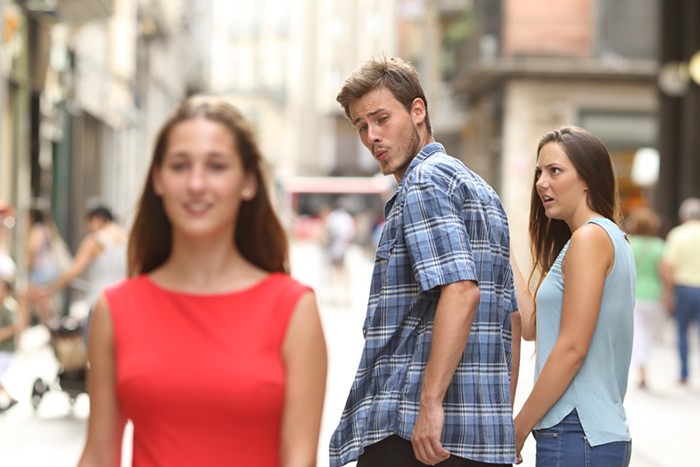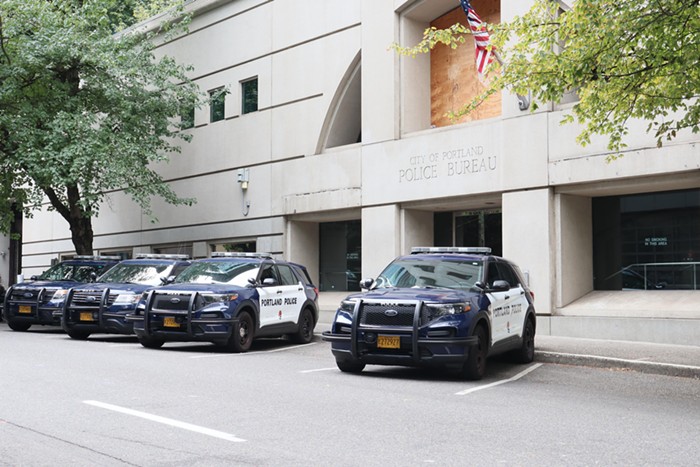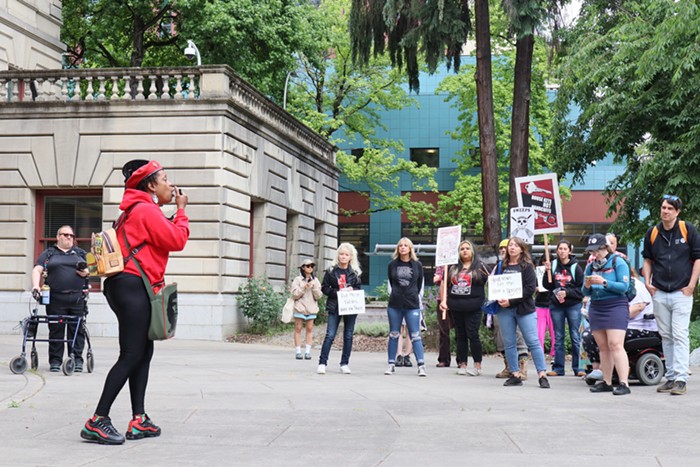
- PICA
- Grouper and Flash Choir
By 10 pm yesterday evening, TBA had worn me out with slow-paced artwork. I started off at the Northwest Film Center for James Benning's Ruhr— a feature-length film that ends with a single, hour-long shot of the top of a smoke stack (which I'll further explore in a later post). After Ruhr concluded, I headed to Washington High School for the Works, where NEW MUSICS was billed for a 10:30 start. When I arrived at the school, I was in serious need of something with some strong entertainment value.
I had high hopes that I'd find a remedy in NEW MUSICS, a program inviting, as PICA's event description puts it, “Portland’s most exciting sound scientists and pop adventurers to collaborate with some of the city’s under-sung traditional music ensembles.”

- PICA
- Tashi Wada
The night started off with San Francisco-based Tashi Wada's "Color Film 5 and Field Organ." The piece combines an ambient, two-part composition for reed organs with a video featuring a flat, slow-changing color field. Like I said before, my receptivity for this sort of stuff had been dulled by Ruhr's snail pace, and I kept myself awake during the performance by taking notes— documenting a green field of color that deadened into gray (and then violet, pink, purple, and blue), and dual organs that worked through a 30-minute atonal chord molasses (non-melodic arrangements of notes, sustained for minutes on end, alternating between "resonance and dissonance," in Wada's words). At one point I wrote, "Can't tell if they're cycling through notes in any particular pattern or scale,” and later, “The composition hits major chords at fairly even intervals, though with less regularity than the dissonant movements." That pretty much sums up the droning sonic qualities of the piece, which left me south of stoked for the rest of the night's scheduled events.

- PICA
- Grouper and Flash Choir
To my relief, the programming improved. Next up was Grouper's collaboration with Flash Choir, combining tape collage and voice. While sharing ambient qualities with the previous performance, Grouper's "PART" communicated a dynamic compositional arc— an aspect that Tashi Wada missed completely. It started off with a recording of rain, which was soon backed by a reverb-heavy melody, becoming more pronounced before the choir chimed in. Spooky choral harmonies became increasingly complex, a bass line throbbed in at just the right moment, and lyrics were introduced— a compositional element I was thirsty for. No doubt about it, this was a carefully planned piece, and the blankets and swaths of blurry lights that were projected above the choir rounded out an abstract, ghostly vibe. From start to finish, the piece grew in intensity, peaked, and resolved with the choir singing a single note. The dynamics were welcome after navigating Tashi Wada's flat world.

- PICA
- Claudia Meza, plus Portland Taiko and Flash Choir
The final piece of the night, Claudia Meza's collaboration with Portland Taiko and Flash Choir, entitled "Mourning Youth," was no slouch. Behind slo-mo shots of skateboarders and young people hanging out in urban settings, bouncy squeaks were matched by Meza's vocals, and a back and forth between the taiko troupe and live electronic elements ensued. From time to time, a dancer took the stage to perform brief bits of choreography. Hyper-slow videos of hair flips and lip gloss hung on the screen. The taiko folks worked through relatively simple, ascending melodies— occasionally taking breaks for choral sections and minimalist electronic interjections. While this piece had a good bit of variety to it, it didn't feel as well orchestrated as Grouper's "PART." Where "PART" provided impeccable pacing, Meza's "Mourning Youth" stumbled. Drums picked up and dropped out without servicing any finite crescendo or clear result (which could be attributed to Meza's compositional goal, a "wordless opera"). The piece takes you somewhere, then drops you off, only to loop around the block and open its door again. All the getting out and getting in felt a bit unfocused.
That said, "Mourning Youth" might've been the most engaging of the night with its comparatively large sonic pallet and beautiful visuals, but it didn't feel complete or ironed out.
At the end of the performance, Meza noted that the piece is still a work in progress— that she's been refining it since its debut at last year's TBA— and there's still some fine tuning to be done. It'll be interesting to see how "Mourning Youth" turns out when it's finished.












